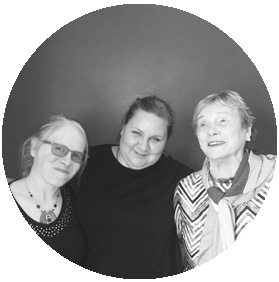
I am partially blind. My colleague Evelyne has a visual impairment as well, and my other colleague Julie has a rare disease that forces her to remain still for various periods of time. We met three years ago and over discussions of our shared values about the importance of disabled people in society, we decided to form a partnership. We now lead H.A.S.C., or le Handicap Au Service des Compétences, which translates to Disabilities Reveal Skills in English.

As an organization, we believe every individual has a story and is more than their disability. Thus, we believe businesses should recruit and include people with disabilities, and we provide training that helps them do that. Kahoot! helps us get our message across in an engaging and dynamic way, helping create more inclusive work environments, one company at a time. Moreover, we also want companies to realize that hiring a disabled co-worker is a valuable asset to a team. Indeed, disabled people can work exactly like everybody but with different practices.
Creating kahoots with a visual impairment
Before we incorporated Kahoot! into our training sessions, we used to display questions on the presentation screen and hand out paper for people to write their answers on. Our co-working space played Kahoot! at a special event and we realized this would be a much more dynamic tool to assess learning than paper and pen.
The color contrasts on the Kahoot! platform enable me to create kahoots, even with my impaired vision. I can easily find the buttons to click that add questions and images. I also have software on my computer that can read text to me out loud or zoom in on the screen if I encounter any difficulties. Kahoot! offers plenty of personalization options and we make sure each game has our company logo and designs.
Assessing learning
We run two different training sessions for companies. The first one provides training for hotel staff on how to make people with disabilities feel welcome. We offer the second one to companies that trains them how to properly recruit disabled people. In both sessions, we play Kahoot! at the end to assess their learning. The reports that Kahoot! provides after the games are essential for me to know if the content was understood and retained. This is important information for me to ensure that our training practices are producing results.
“Everybody wins when the work environment is a more inclusive place.”
We do our best to make training sessions interactive and fun, and Kahoot! helps us accomplish this goal. Its bright colors and music let everyone know that it will be a lively game and it’s a great way to end a session. The friendly competition gamifies the usual learning process! Our clients are excited when their team wins, and at the end we always say that everybody is a winner! Everybody wins when they contribute to making the work environment a more inclusive place.
Like H.A.S.C., Kahoot! values the impact inclusivity has on the workplace! We strongly support Anne-Laure and her team’s mission to change the way society views people with disabilities, especially in the workforce. If you’re inspired by how H.A.S.C. has been playing Kahoot! to train clients, read more about our available business subscriptions.




